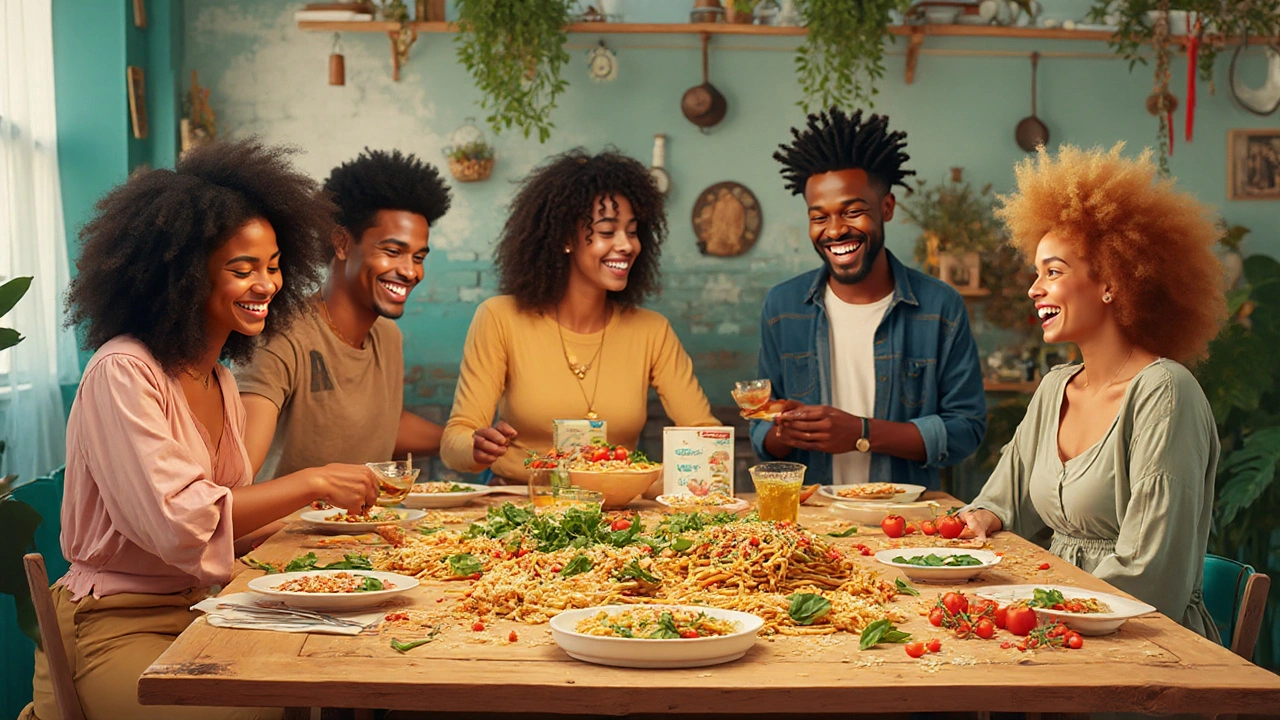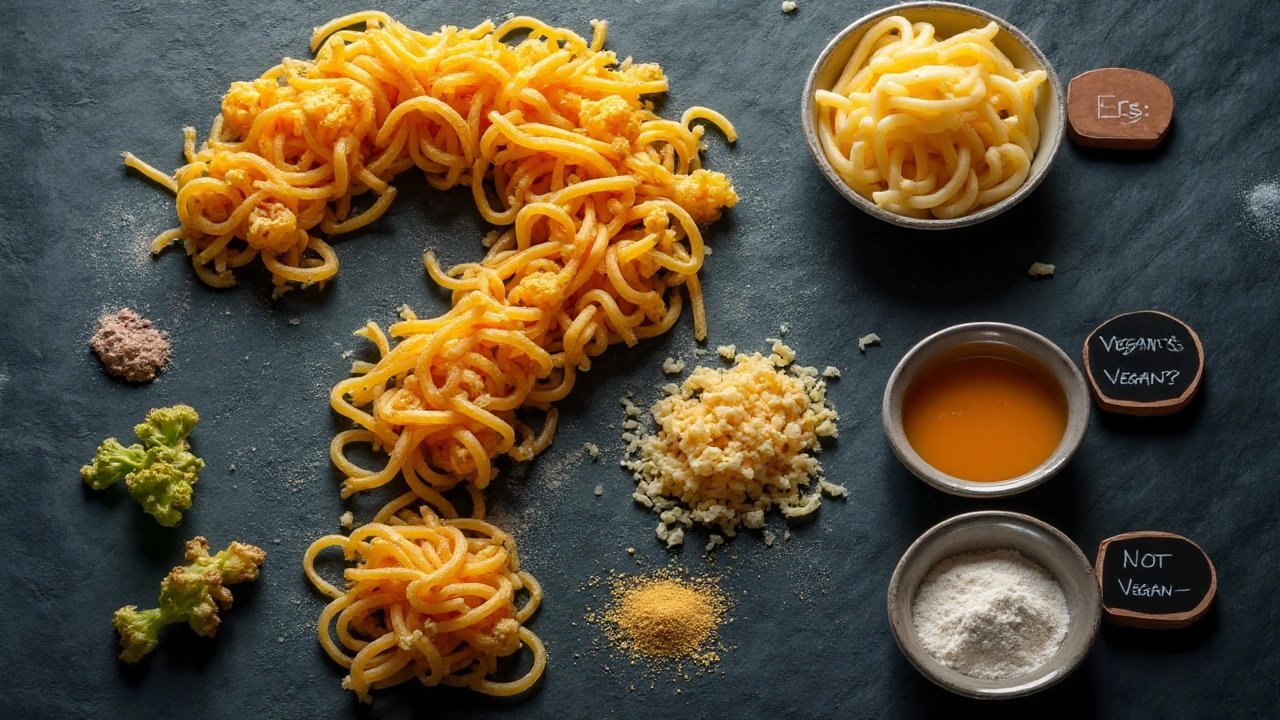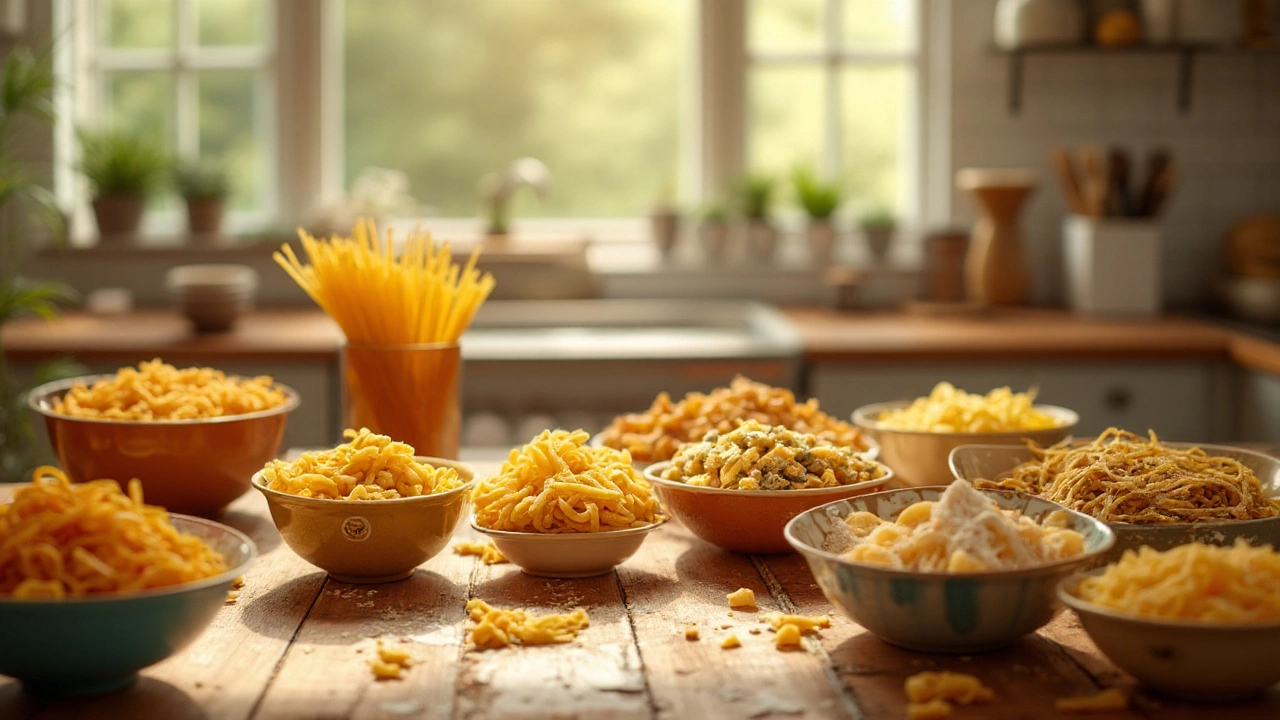Picture this: you’re at a cozy Italian place, hungrier than a bear fresh out of hibernation, scanning their pasta section. The waiter asks, “Are you vegan?” Now, there it is—the million-dollar noodle question. The world sees pasta as the ultimate comfort food. It’s the anchor of hearty family dinners and lazy Sunday meals. But does it play nice with a vegan diet? Spoiler alert: this isn’t as cut and dry as you’d expect. Let’s dig deep, bowl by bowl.
What Actually Goes Into Your Pasta?
The biggest surprise? Most dried pasta is already vegan. Yeah, the bulk spaghetti or penne you snag from mainstream stores usually sticks with wheat flour and water. Yet the rabbit hole goes deeper. Traditional Italian pasta, especially the fresh kind, might have eggs. Ravioli, fettuccine, and pappardelle often sneak in a few yolks for richness and chew. That’s where the rules change for vegans. When you’re eyeballing pasta labels, here are the classic ingredients you’ll spot in commercial and homemade options:
- Semolina flour (usually from durum wheat)
- Water
- Salt (sometimes)
- Eggs (common in fresh/premium pasta)
- Flavored additions (like spinach powder, tomato paste)
When you’re shopping for dried pasta, odds are high it’s egg-free. Barilla, De Cecco, store-brand staples—nearly all stick with two vegan-friendly ingredients. The main exceptions include fresh pasta and specialty shapes (think handmade tortellini or festive colored ribbons). Eggless pasta doesn’t mean bland or boring, either. The best eggless pasta brands, like Garofalo and Ronzoni, pass the taste test with flying colors. Here’s a side-by-side cheat sheet for what’s usually in the package:
| Pasta Type | Main Ingredients | Usually Vegan? |
|---|---|---|
| Dried spaghetti, penne, fusilli | Wheat flour, water | Yes |
| Fresh pasta (refrigerated) | Wheat flour, eggs, water | No |
| Egg noodles | Wheat flour, eggs | No |
| Stuffed pasta (ravioli, tortellini) | Wheat flour, eggs, cheese/fillings | No |
| Specialty gluten-free pasta | Rice, lentil, corn flours | Usually Yes |
| Asian noodles (rice, udon, soba)* | Rice/wheat/buckwheat, water | Check label |
*Soba sometimes contains egg or a wheat/buckwheat blend. Always peek at the package.
You can play it safe by checking the back for "contains egg" under the allergens—or just keep it simple with classic dried varieties. For real peace of mind, look for the vegan-certified logo on the packaging. Don’t trust what a friend says about which brands are safe. Ingredients can change, and imported pasta might follow older egg-based recipes.
Want extra credit? Some fancy pasta makers add things like squid ink (makes pasta black) or use cheese powder for flavor. Not so vegan-friendly. Hidden animal ingredients pop up more in gourmet or regional types, so familiar brands are usually safer. Now, if you’re gluten-free and vegan, that’s a double challenge. Good news: tons of gluten-free, plant-based noodles fill the shelves now. Brands like Jovial, Tinkyada, and Banza (made from chickpeas) are all the rage and sparking night-after-night creativity.

Common Vegan Pasta FAQs and Ingredient Pitfalls
Ever get confused by pasta names? The shelves get a little wild—there’s orecchiette, farfalle, pici, mafaldine. But the real mix-up comes from ingredient labels. Here’s a lightning round of answers that people in vegan forums and kitchen tables keep bringing up:
- Is standard spaghetti vegan? — Almost always, unless it’s labeled as “Egg Spaghetti.”
- What about ramen noodles? — Most straight-from-the-packet dry ramen is vegan, but the seasoning packets often include meat, seafood, or egg derivatives. Check both noodles and soup base.
- Are lasagna sheets vegan? — Standard wheat lasagna noodles are usually vegan. Fresh or “oven-ready” versions sometimes add egg, so double-check the box.
- What’s the deal with gnocchi? — Potato gnocchi may have egg as a binder. There are vegan brands, but read carefully.
- Is whole-wheat pasta still vegan? — Pure whole-wheat pasta without egg is vegan-safe. Sometimes the whole-wheat, organic, or specialty types throw in egg for texture.
- Is all gluten-free pasta vegan? — Not a guarantee. Some old-school gluten-free pastas use egg as a stabilizer—especially the ones sold at health food stores in the past. Modern brands are mostly plant-based but peek at the allergen panel just in case.
Sometimes, there’s a wild card on the ingredient list—words like “albumin” (egg protein), “casein” (milk protein), or “lactose” (milk sugar) may show up, even in surprise places. While rare in pasta, if you’re a vigilant vegan and the list is long or complicated, don’t leave it to chance.
Curious about restaurant pasta? Whether that's Olive Garden, an independent trattoria, or your favorite fusion spot, the safest bet is to ask, “Is there egg in your pasta?” Even chain restaurants will have an ingredient binder or a corporate FAQ. Some spots prep a huge batch of generic dried pasta that’s definitely egg-free, but higher-end places pride themselves on handmade noodles—often egg-based.
If you’re making pasta at home from scratch and want to go *full vegan*, the internet is brimming with creative techniques. Swapping eggs for aquafaba (chickpea liquid), olive oil, or even pureed silken tofu gets doughy magic done. Think chewy, slurpable, and pure plant-powered. Gluten-free blends like brown rice flour plus xanthan gum, or a rice-potato-starch mix, open up tons of homemade paths for folks avoiding both animal products and gluten. One classic hack: blend semolina flour with just enough water to pull a soft dough, knead, rest, and slice or roll as you’d like.
Keep an eye out for vegan certifications when you’re unsure. The Vegan Society, PETA, and some national groups offer a clear "V" logo. Brands like Explore Cuisine, Ancient Harvest, and Barilla’s Protein+ line all sport vegan labels for their plant-based options. If you're new to veganism, you might feel like every shopping trip turns into a scavenger hunt. After a few visits, you’ll find a handful of brands you can trust without squinting at every line in the ingredient list.

Must-Know Tips and Tasty Vegan Pasta Ideas
Ready to fill your pantry? Here’s how to unleash your inner vegan pasta master:
- Stock up on semolina-based dried shapes—penne, rigatoni, fusilli, spaghetti. These are your blank canvas.
- Look for symbols: Most brands shout “egg-free” or “vegan” on their bags now. If you see the word “uovo” on Italian imports, that’s egg.
- If you’re eating out, just ask the server. “Are your noodles made with egg?” is the fastest check. No shame—it’s a common ask nowadays.
- Ready-made plant-based sauces can jazz up any simple dish. Marinara, arrabbiata, olive tapenade, or simple garlic-and-oil—these are all naturally vegan.
- Game changer: Try legume-based noodles for a protein kick. Banza and Barilla Red Lentil pastas taste hearty and pair perfectly with chunky veg ragu or robust green pesto.
- Get creative at home—throw together “mac and un-cheese” (cashew or potato-carrot-based cheese sauce melts right in!). Or whip up creamy pasta alla vodka with coconut cream instead of dairy.
- Vegan cheese crumbles, toasted breadcrumbs, or a squeeze of lemon replace Parmesan. Bonus points for nutritional yeast—savory, nutty, and 100% vegan.
- Add chickpeas, roasted eggplant, or spinach to create filling, balanced meals without animal products.
- Try cold pasta salads for hot weather—mix tomatoes, cucumbers, olives, and lots of herbs for easy, plant-based eats.
- Meal prep for busy weeks by cooking a whole box of pasta, tossing in simple veggies and a dressing, and storing portions for workdays.
Is pasta vegan? Absolutely—if you know what to look for. Plant-based eaters don’t have to say goodbye to rigatoni, spaghetti, or cavatappi. They just might need to wave off some fancier handmade styles. Next time you spot pasta on the menu or the grocery shelf, you’ll know exactly how to judge which noodles get the vegan stamp of approval and which are best left for someone else’s plate. Noodles unite the world, and now, vegan cooks have more than enough ways to twirl, slurp, and savor every last bite.

